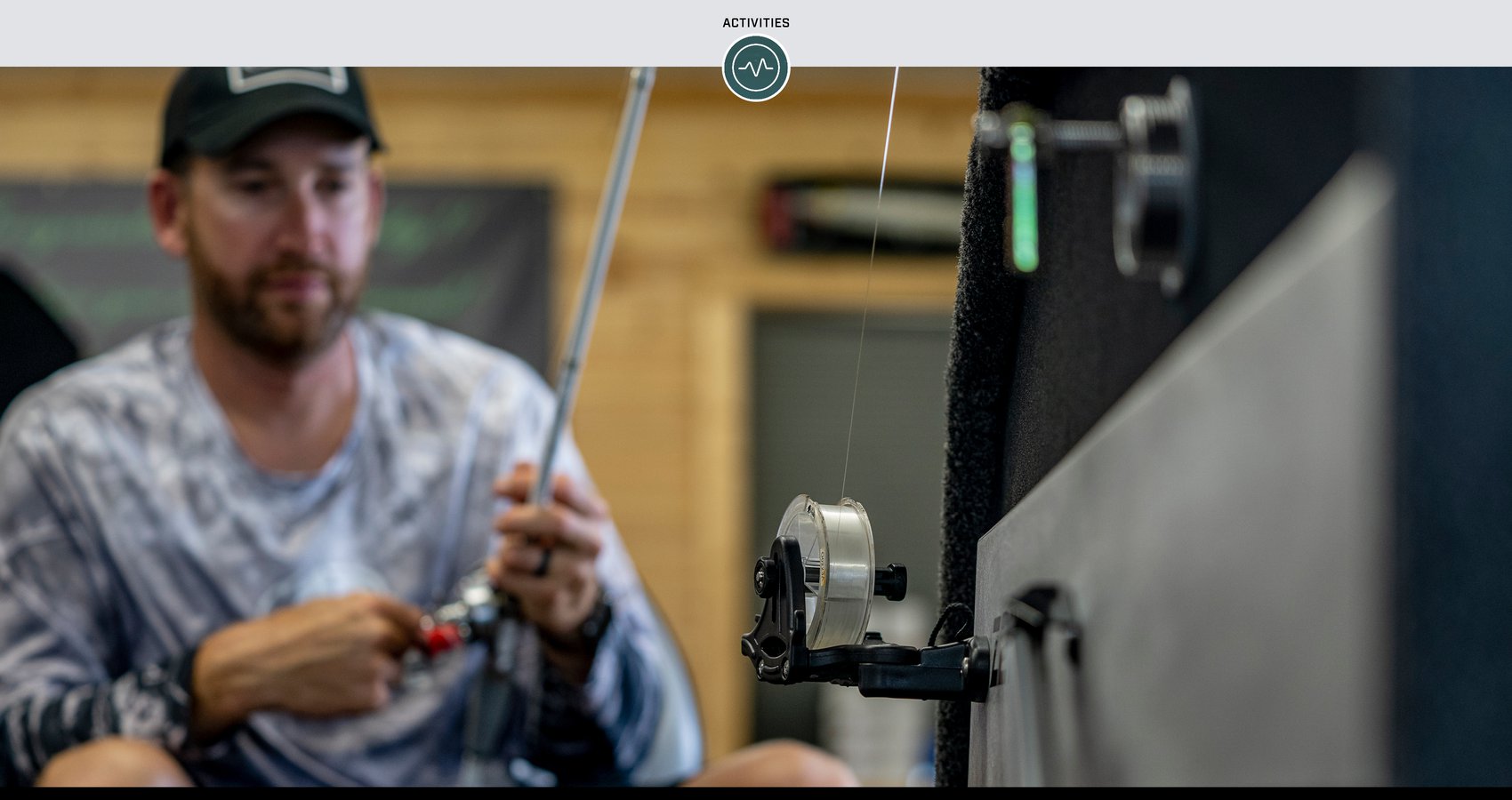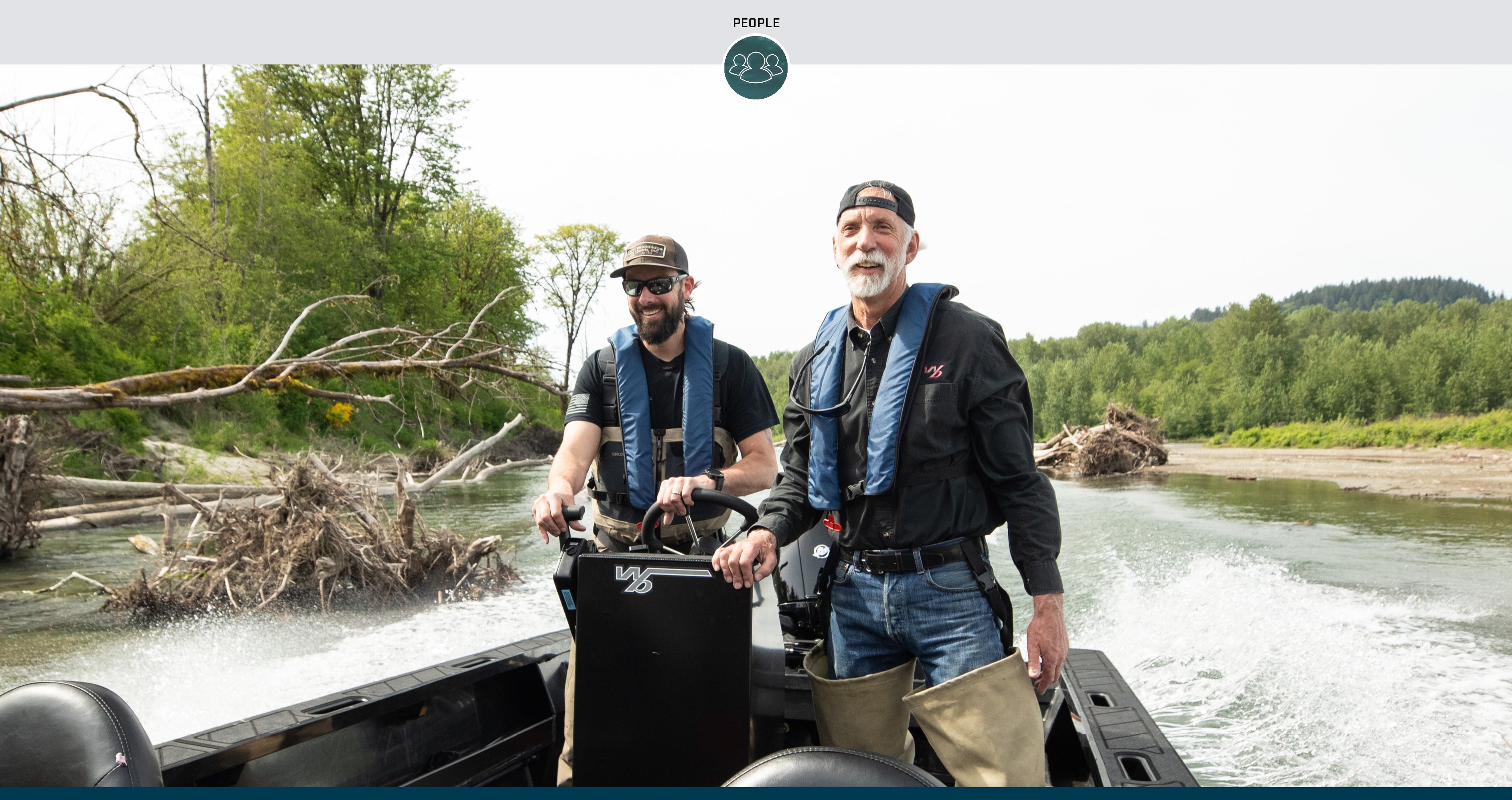Ask any bass angler what their favorite type of bass bite is, and chances are the answer will be a topwater frog bite. That’s how Mercury Pro Team member Mark Zona would answer. To say the host of “Zona’s Awesome Fishing Show” has frogging fever would be an understatement
“Nothing compares to the mayhem that happens with frog fishing,” Zona said. “Everything about a topwater frog bite spells apex predator. It’s topwater fishing heaven! Bass pros who have caught thousands of bass in their careers vividly remember frog bites the most.”
Zona offered up his advice to help you create more memorable frogs bites, too.
What is a hollow-bodied frog?
Hollow-bodied frogs are weedless topwater lures. They have hollow soft-plastic bodies for buoyancy, and the bodies are molded to help guard the hooks from snagging on grass or wood. This allows you to fish them around all sorts of bass-holding cover.
Interestingly, frogs as a lure category are a bit of a misnomer. Even though hollow-bodied frogs are molded with two skirted legs to look like frogs, Zona believes most bass attack frog lures because they emulate fleeing bluegill so well. “I have certainly seen bass eat live frogs at the water’s edge,” he added. “But most times when I have been on a great frog bite, the bass were actually feeding on bluegills.”
Zona keeps a couple of frogs tied on and ready for action from early May through Thanksgiving. He divides frog fishing into two categories – open-water frogging and matted-vegetation frog fishing – and he uses a Strike King KVD Sexy Frog for both types of fishing.
How to walk a frog in open water
Frogging in open water means fishing a topwater frog in sparse cover, such as scattered vegetation, laydowns, docks, undercut banks and shallow bushes.
“Think of a frog in open water as a weedless spook-type bait,” Zona said. “You want to impart a walk-the-dog action to the frog, just like you would with a topwater walker. We call it ‘walking the frog.’”
When walking the frog, he prefers a Lew’s 7-foot, 3-inch, heavy-action rod designed by fellow Mercury Pro Team member Greg Hackney. He teams the rod with a Lew’s HyperMag reel featuring a high-speed 8.3:1 retrieve ratio, spooled with 50-pound-test braided line. His favorite color for open-water frogging is green pumpkin gill with an orange throat to resemble a bream.
To improve the walking ability of his open-water frogs, Zona employs a couple of small modifications. He pulls five to eight strands from each skirt or “leg.” Then he takes scissors and trims the legs, leaving one leg a bit shorter than the other. One leg is about an inch long, and the other an inch and a half.
Removing strands and trimming the legs unevenly helps the frog walk better. The longer leg drags more water, creating an unevenness that keeps the head darting right and left with twitches to the rod tip. These mods make the frog snap back and forth more vigorously.
“The beauty of a floating frog is that it’s snagless, making it much more efficient than other lures,” Zona said. “I cast it fearlessly into the tightest spaces and thickest cover. It’s the ultimate weapon for casting into the heart of laydowns, into flooded bushes, skipping under docks, and over any shoreline grass or slop.”
Since bass are ambush predators, contacting cover with a lure trips their trigger. Therefore, attacking cover with a frog is a great way to provoke bites. The idea is to make the frog slip and slide over, under and through cover right in front of the fish.
“Think bull in a China shop,” Zona said. “Don’t avoid the cover. Line your retrieves up to contact it. You want the frog to hop over the branches of a laydown, bump into the poles of a dock, and waddle through the middle of a flooded bush or scattered vegetation
“When you get a bite, you’ll know it,” he added. “They usually inhale and crush the frog before the angler knows what happened. Then it’s just a sweep hookset, and the fight is on.”
How to fish a frog over thick matted vegetation
Fishing hollow-bodied frogs over thick vegetation mats is what made frog fishing famous. Mats are usually formed by topped-out hydrilla, milfoil or lily pads and then covered in “cheese,” a term anglers use to describe the algae, slop or duckweed that accumulates on top of the matted vegetation.
For this type of frogging, Zona beefs up his tackle to a 7-foot, 11-inch Team Lew’s Greg Hackney Signature Series flipping stick and 65-pound-test Seaguar TactX braid on the same 8.3:1 ratio reel. He switches to white- or bone-colored frogs in the thick stuff to help him – and the fish – see it better. Zona also reduces the frog's profile by trimming most of the skirt material, leaving just 1/2-inch “fluffs” for the legs. Stuffing a couple of glass or brass beads into the frog adds extra weight and noise for even more attraction.
“When we go to this level of tackle, we are not playing around anymore,” Zona said. “It takes this kind of heavy-action artillery to winch big ones out of those mats. The TactX is a serrated braid that helps cut the vegetation out of the way when heaving fish in.”
Mats often extend for miles, especially in the summer and fall. Finding bass in all that grass starts with locating the caverns or hollow spots under the mat where bass congregate. They can be visible as “soft spots” on the mat, small gaps, holes or seams.
Zona relies on his eyes and ears to find them. Close study of large mats will reveal places where the vegetation looks “looser” or more “sunk in” than the hard crowns of vegetation around them. Also, the color of the mat’s surface might change where the vegetation is thinner. The “cheese,” for instance, usually has more of a neon green or yellow appearance.
Listening to a mat can give away productive areas as well. Often, bream will pop surface mats when sucking in bugs, especially in the heat of the day. The pops sound like sharp crackling and will usually be confined to one area. Where there are bluegills popping, there are usually bass eating.
“When in search mode, I’ll bomb the frog out into the mats and speed reel it back to the boat to cover water, feeling for those cavernous soft spots,” Zona said. “Speed reeling can also attract attention and make fish move, giving away their location in the mat.
“If there is one bass in a hollow place in a mat, there are more, I promise you,” he added. “Stop and needle that area very slowly with the frog. Don’t walk it. Don’t speed reel it. Just let the frog sit and barely twitch it to give it movement, then let it sit still again.”
When done correctly, it may take two or three minutes to move a frog 20 feet. It’s a contest of patience. Instead of cat and mouse, it’s bass and frog. Eventually, the bass loses its cool and will blow a hole through the roof to annihilate the frog.
“If you have never fished a topwater frog for bass, then you have never bass fished,” Zona said. “When you see the aerobatics bass are capable of when eating frogs, it provides a new appreciation for their appetite for destruction.”


